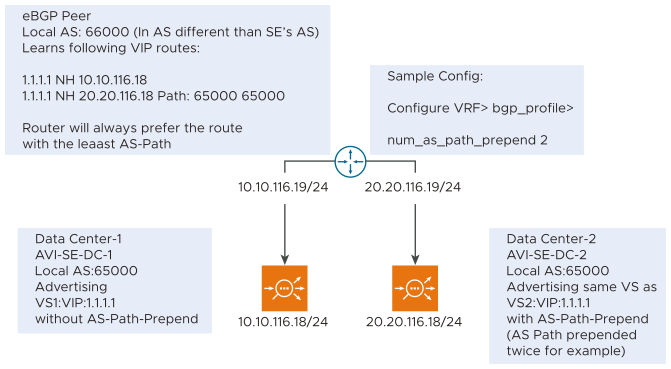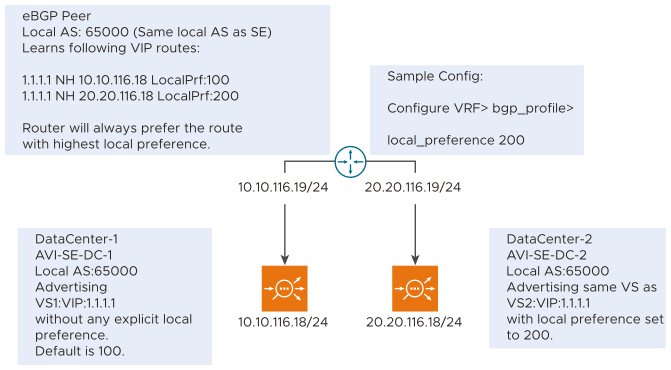This section focuses on the configuring process of the Autonomous System (AS) path and local preference for routes published over eBGP and iBGP respectively.
The AS path prepend and local preference features works with the same pre-requisites or ecosystem support that is listed in the BGP Support for Scaling Virtual Services.
The features are not supported for IPv6.
Prepending AS Path
When multiple paths to an IP address or prefix are available through BGP in a router, the router will prefer the path with the least number of AS identifiers in the path.
The BGP can signal lower priority to a route by prepending an arbitrary number of AS identifiers. This route will be picked only when the route with the lower number of AS identifiers goes down.
This feature allows you to prepend AS identifiers in the path. This is applicable only for routes advertised over eBGP connections.
Setting Local Preference
You can set the Local Preference field to communicate the preference of the path to its peer.
A higher value means higher preference. This is applicable only over iBGP connections.
Use Case for AS Path
The following is the diagrammatic representation of an AS path use case:

You can deploy the same service in two different data centers involving two different NSX Advanced Load Balancer clusters. Both use the same VIP.
The upstream router to which both the SEs get connected will pick the path with the shortest AS path.
If the service with a short AS path gets disrupted, the system picks the one with the longer AS path. This is a method for deploying active stand-by across data centers/ geographies.
Use Case for Local Preference
The following is the diagrammatic representation of the local preference use case:

You can deploy the same service in two different data centers involving two different NSX Advanced Load Balancer clusters. Both use the same VIP.
The upstream router to which both the SEs get connected will pick the path with the shortest local preference path.
If the service with a short local preference path gets disrupted, the system picks the one with the longer local preference path. This is a method for deploying active stand-by across data centers/ geographies.